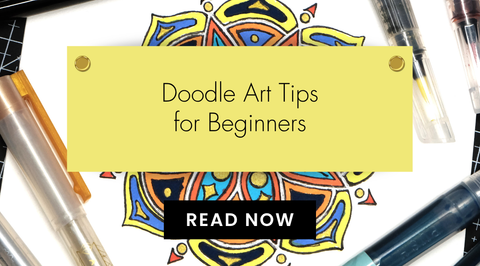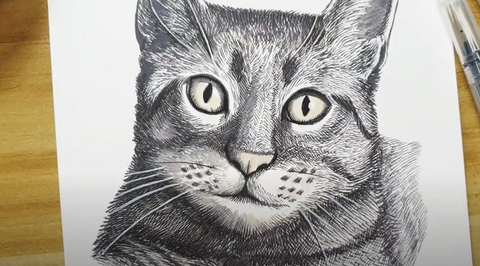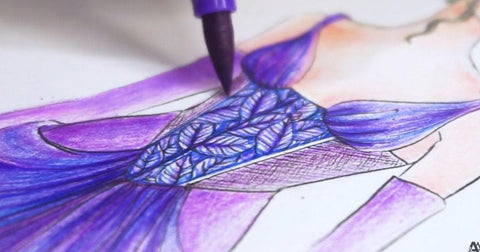The Beauty of Brights: Exploring Bold and Vibrant Colors in Your Artwork
Last Updated: August 8, 2025

In all of its forms, art can evoke emotions, tell stories, and transport the viewer to a different world. Color plays a crucial role in achieving this.
Despite the charm of muted tones and subtle hues, there's something truly captivating about the bold and vibrant colors that can breathe life into any artwork. Let’s explore the impact and significance of using bold and vibrant colors in your artistic endeavors.
What Are “Brights”?
In art, "brights" usually refer to intense, vivid, and highly saturated colors. In an artwork, these bold hues stand out prominently. Bright colors are associated with high energy, strong emotions, and visual impact.

Bright colors are those that grab the attention of the viewer, including rich reds, sunshiny yellows, brilliant blues, and gorgeous greens. Artists use bright colors to convey a sense of excitement and intensity or to create visually striking compositions. The term is subjective, however, and can vary depending on individual perceptions and the context of the artwork.
In contrast to "brights," there are also muted or subdued colors that are less intense and more toned down. Artists choose their color palettes based on the mood, emotions, and messages they want to convey through their work.
The use of bright colors is a stylistic choice, but it often adds dynamic and lively elements to a piece of art.
Famous Artists Who Mastered Brights
Several famous painters throughout art history have been known for their masterful use of brights. Here are a few notable artists renowned for their use of bold, vibrant hues.
1. Vincent van Gogh (1853-1890):

The Bedroom, by Vincent van Gogh (1889)
Van Gogh is celebrated for his expressive use of color, particularly in works like "Starry Night" and "Sunflowers." His paintings often feature intense yellows, blues, and greens, creating a vivid and emotionally charged atmosphere.
2. Henri Matisse (1869-1954):

Portrait of Madame Matisse. The Green Line, by Henri Matisse (1905)
Matisse, a prominent figure in Fauvism, employed bold, non-naturalistic colors to evoke emotion and instill a sense of movement. His masterful use of bright, intense colors is evident in works like "The Dance" and "Woman with a Hat".
3. Claude Monet (1840-1926):

Bouquet of Sunflowers by Claude Monet (1881)
A leading figure in Impressionism, Monet's innovative use of bright and broken colors is exemplified in his series paintings such as "Water Lilies" and "Haystacks." He masterfully captured the changing effects of light using vibrant and varied color palettes.
4. Frida Kahlo (1907-1954):

Still Life with Parrot and Fruit by Frida Kahlo (1951)
Renowned for her surreal and symbolic self-portraits, Kahlo often incorporated bold colors and intricate patterns in her work. Her vibrant style is particularly evident in paintings like "The Two Fridas" and "Self-Portrait with Thorn Necklace and Hummingbird".
5. Piet Mondrian (1872-1944):

Avond (Evening): The Red Tree by Pier Mondrian (1908)
A key figure in the De Stijl movement, Mondrian was known for his use of primary colors and geometric shapes. His iconic works, like "Composition with Red, Blue, and Yellow," feature bold, flat colors arranged in a grid.
6. Georgia O'Keeffe (1887-1986):

Oriental Poppies by Georgia O'Keeffe (1927)
O'Keeffe, renowned for her large-scale depictions of flowers and landscapes, often employed bold and intense colors. Her skill in capturing the essence of her subjects through vibrant hues is evident in paintings like "Red Canna" and "Black Iris III".
7. Yayoi Kusama (1929 - Present):

Aftermath of Obliteration of Eternity by Yayoi Kusama
Kusama, a contemporary artist known for her avant-garde and immersive installations, often uses bright and bold colors, particularly notable in her polka-dot and pumpkin-themed works. Her visually striking use of color is exemplified in the captivating "Infinity Mirrored Rooms".
These artists, among others, have left an indelible mark on the art world by harnessing the power of bright colors.
Achieving A “Bright” Spectacle
Just like the artists of the past, bright colors continue to empower artists to evoke emotions, showcase their unique styles, and craft visually impactful masterpieces.
Expressing Emotions Through Color
Colors speak a language beyond words. Vivid hues like fiery reds, electric blues, and sunny yellows can instantly ignite a spectrum of emotions, ranging from passion and excitement to joy and optimism. Artists tap into the emotional power of colors to craft visually arresting masterpieces that resonate with viewers on a deep, emotional level.

Creating Visual Impact
Bold colors make a bold statement. In a world brimming with visual distractions, artworks that embrace a vivid color palette rise above the noise. Whether it's a bold abstract painting or a vibrant digital illustration, the use of bright colors captivates the viewer's gaze and invites them to explore the intricate details within the artwork. The visual impact of bold colors can be a powerful tool for artists seeking to make a lasting impression.
Symbolism and Cultural Significance
Colors often carry cultural and symbolic meanings. Vibrant colors can be used to communicate cultural narratives, express identity, or convey a specific message. Exploring the cultural significance of bright colors allows artists to infuse depth and meaning into their work, fostering a connection between the artwork and its audience.
Experimentation and Innovation
Stepping into the realm of bright and bold colors ushers artists into a world beyond their comfort zones, unlocking a boundless tapestry of creative possibilities. The allure of vivid hues beckons artists to venture beyond the familiar, prompting them to explore unconventional color combinations and forge unique visual languages that set their work apart.

Celebrating Diversity and Inclusivity
A rich and diverse color palette mirrors the diversity of the world we live in. Artists incorporating a spectrum of vibrant colors celebrate the beauty of differences and promote inclusivity. Whether through representational art or abstract expressionism, bold colors are powerful tools for expressing the kaleidoscope of human experiences.
Be Bold and Brave With Brights
Using brights in your artwork is a dynamic and multifaceted venture. From emotional expression to visual impact, cultural symbolism to experimentation, the beauty of these dazzling hues and shades transcend the canvas, leaving a lasting impression on both the artist and the observer.
So, let your creativity flourish in a riot of colors, and may your artistic journey continue to be as vibrant as the hues you choose to bring to life on your canvas. And don’t worry if you run out of inspiration and ideas; we have plenty of them in The Creative Corner. Have a colorful day!






